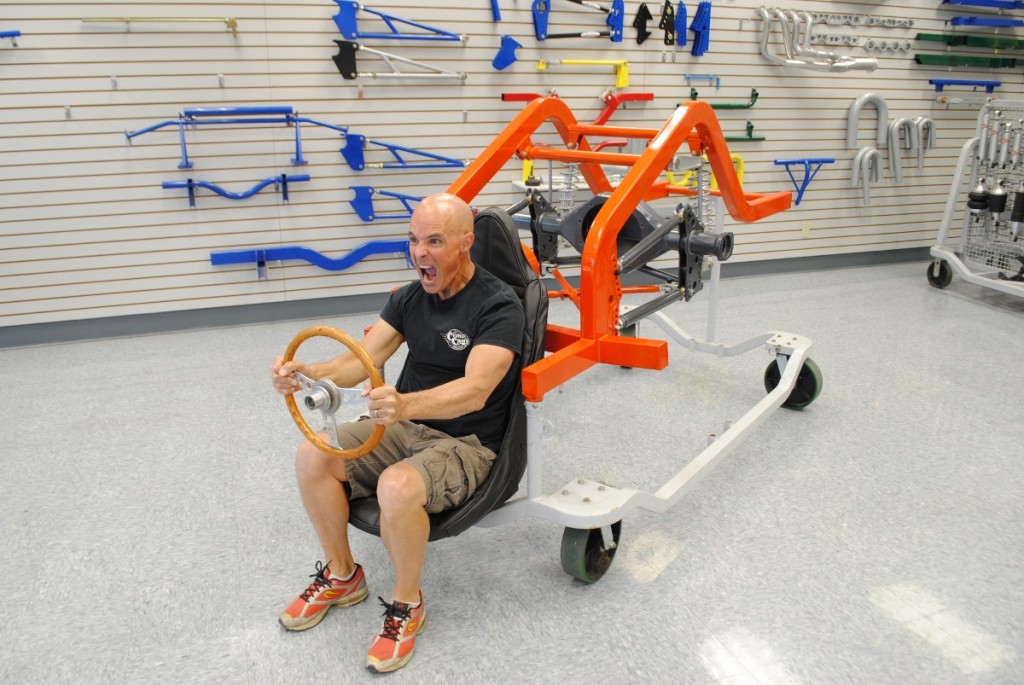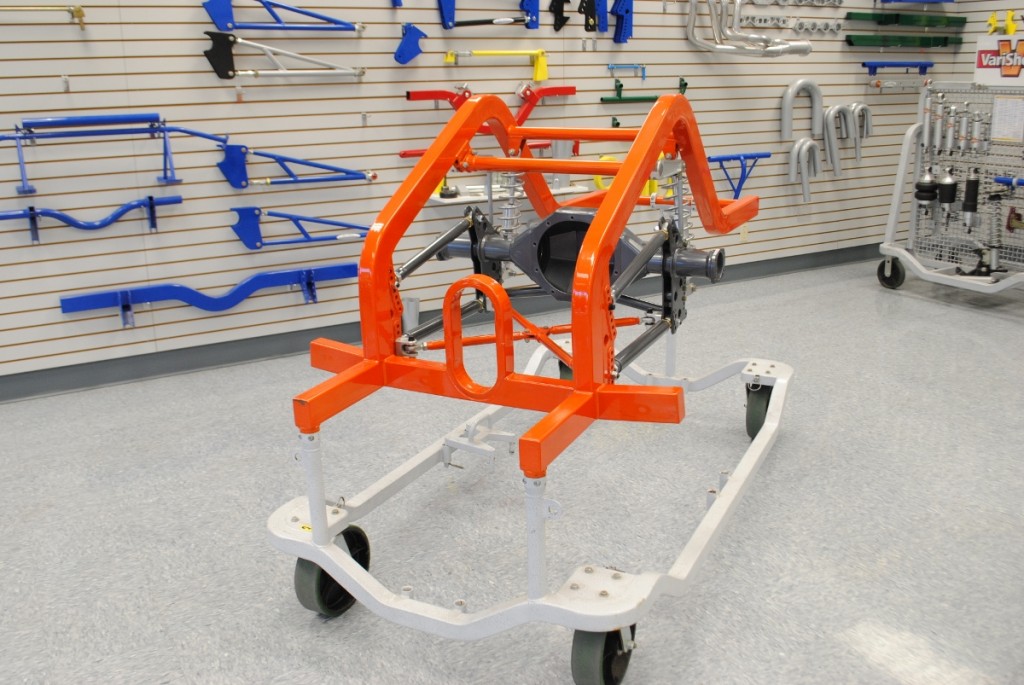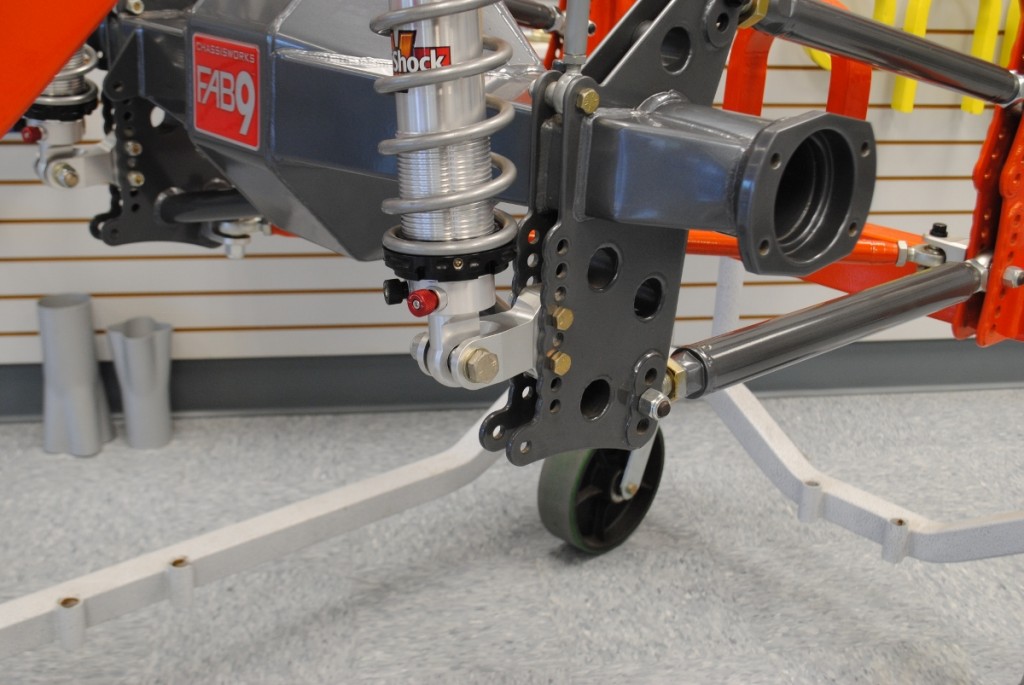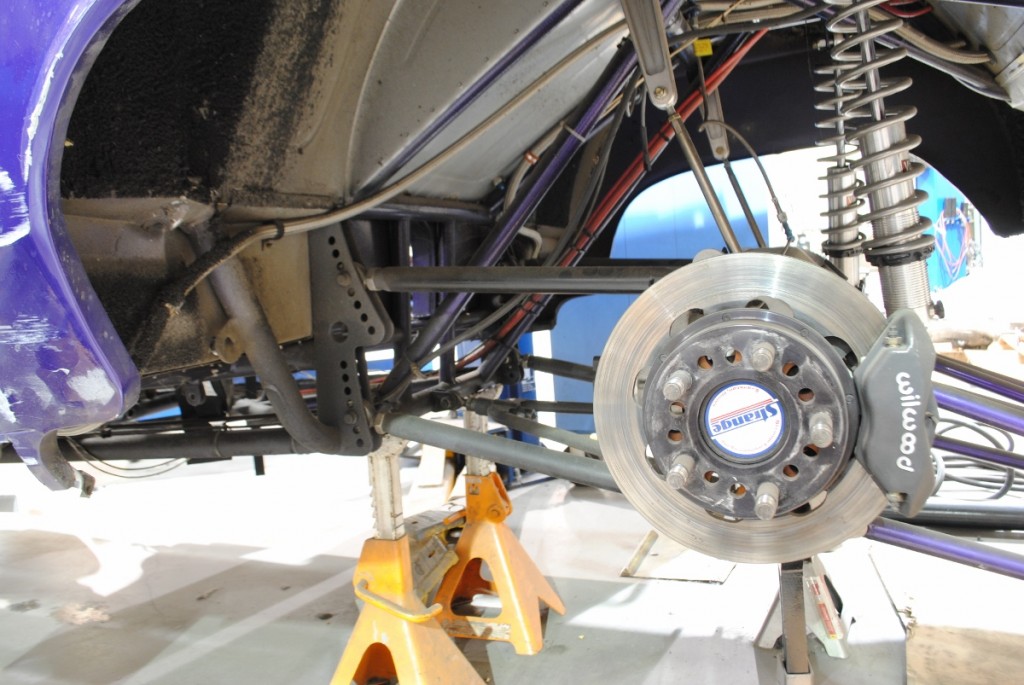Words and Photos By: Richard Holdener
Chassisworks Drag Race Rear Suspension
When it comes to drag racing, the only thing more important than making power is getting that power to the ground. How many times have we seen a 500-hp car put the smack down on a car making 1,000 hp because less than half of the available power made it to the street? The key to any successful acceleration contest is traction.
Top-Fuel cars make more power than they could ever hope to harness, so the key to a successful Top-Fuel run is to apply the maximum amount of power for the available traction. This same theory (albeit at a lower power level) applies to any drag race vehicle. Knowing this, it seems obvious lower ETs (and increased trap speeds) come with improvements in traction. While the tire is ultimately responsible for the application of power to the pavement, it is the suspension that ensures maximum usage of the available contact patch. Basically, the suspension converts action into traction.
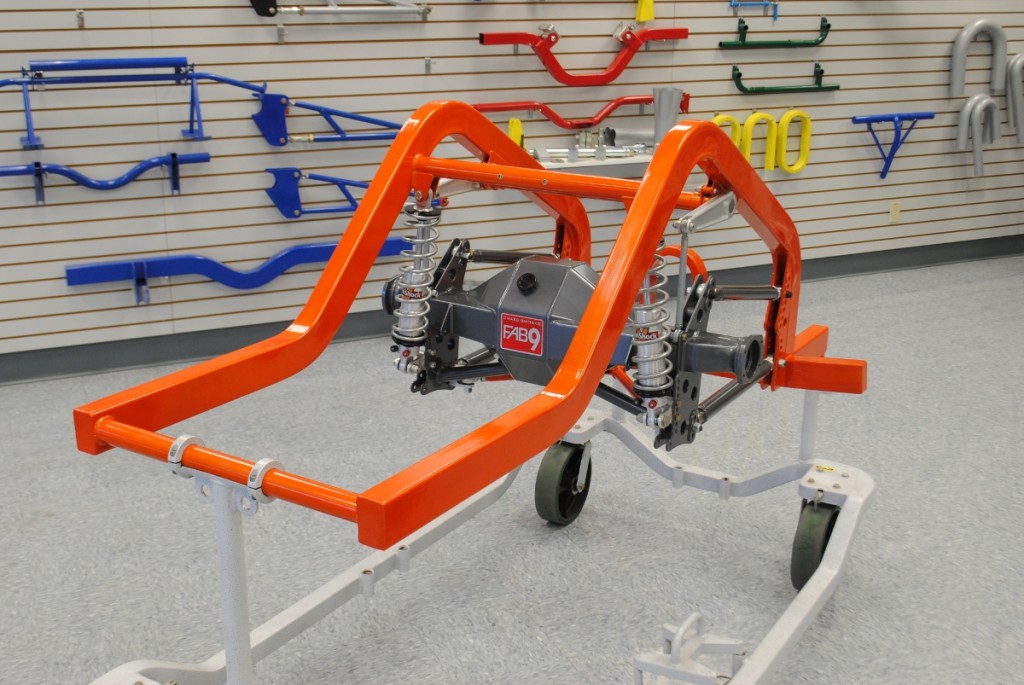
The ultimate in rear suspensions from Chris Alston’s Chassisworks started with a Drag-Race Eliminator II rear clip.
Though the front suspension obviously plays a role, we will limit this discussion to the rear suspension of a drag race vehicle. When it comes to drag racing, there are two different approaches to building the rear suspension, piece-meal and the systems approach. Given the proper attention, both can ultimately be made to work, but the systems approach applied by Chassisworks to their Eliminator II Drag-Race rear suspension all but ensures success.
When you piece-meal the various components that make up the rear suspension for a drag race rear suspension, you never know if they were designed to work together. Does the shock valving work with the spring rate? Does the 4-link provide proper geometry? What about the strength? Are the components strong enough to minimize deflection that can greatly reduce effectiveness (and critical repeatability)?
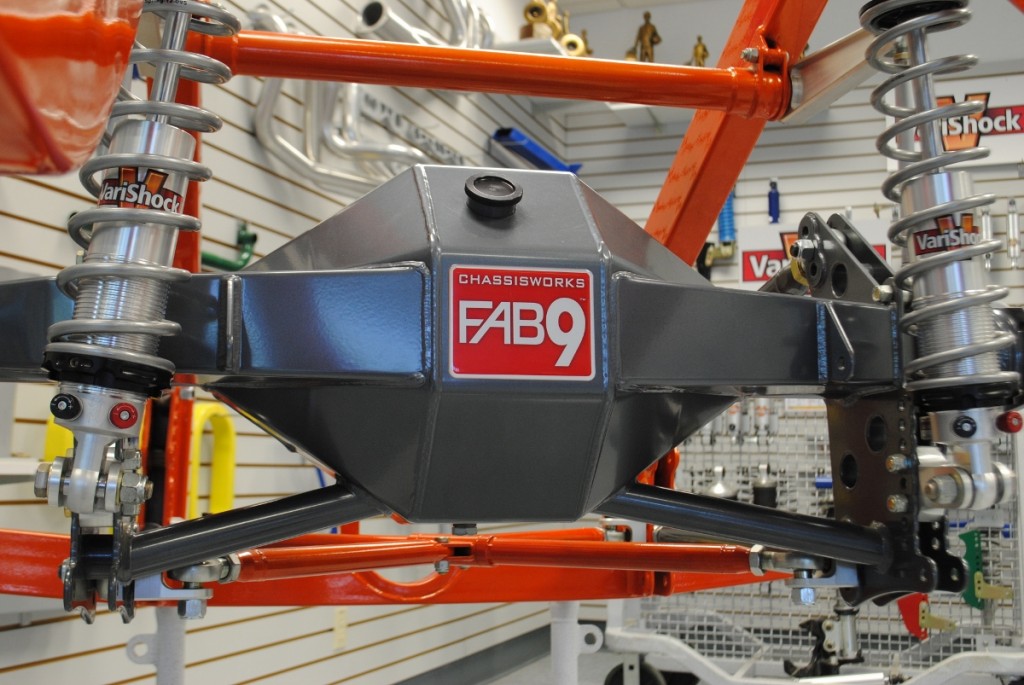
Naturally the rear clip was also designed to accept the Chassisworks FAB9 rear end housing. The housings are available in widths ranging from 22 inches all the way out to 62.25 inches.
Though it is possible to get lucky, the best method is to install a rear suspension system that was designed specifically to plant power to the pavement.
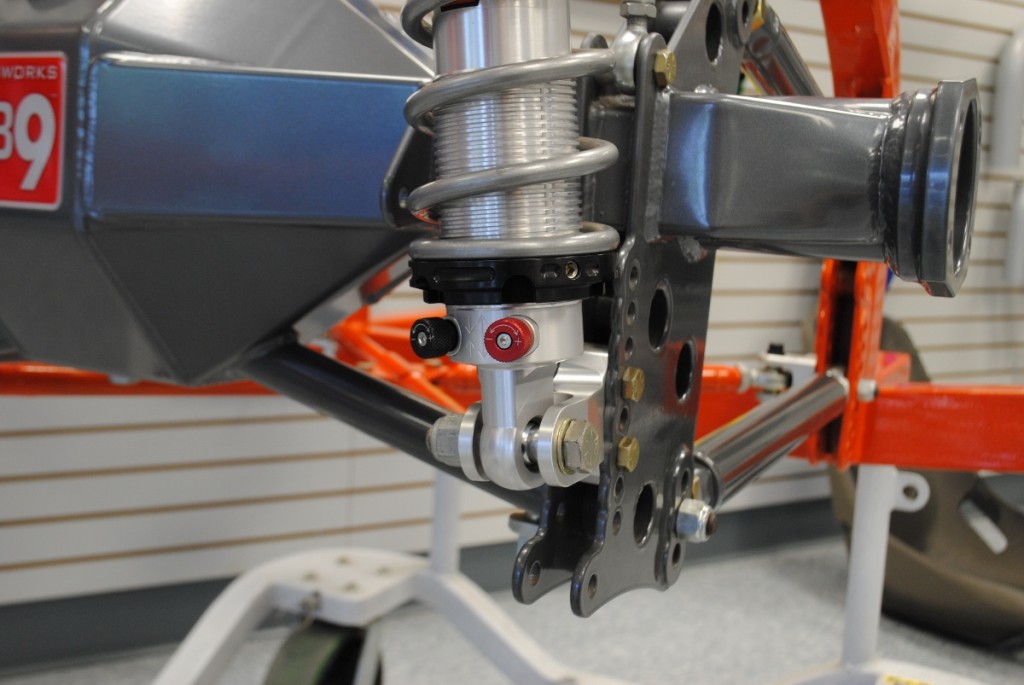
The Drag-Race Eliminator II 4-link rear suspension features double-sheer, adjustable lower shock mounts designed to allow fine-tuning of the rear ride height.
The Eliminator II Drag-Race rear suspension from Chris Alston’s Chassisworks was designed with hookin’ and bookin’ in mind. Putting their decades of drag racing experience to work, they designed a system from the ground up. In fact, they offer a number of systems, along with the various components that make up each complete system.
As with any proper system, the Eliminator II Drag-Race rear suspension started with a strong foundation, namely the rear clip. Even the best suspension components will be next to useless if the frame allows excessive deflection. The Eliminator II 4-link rear clip features ultra-strong, 3×2-inch box tubing. When combined with proper design and precision welding, the result is a rear clip that provides a sturdy foundation for the 4-link suspension. What this means is the rear clip will not be the limiting factor in your build, and you will be able to apply every ounce of power from that blown big-block.
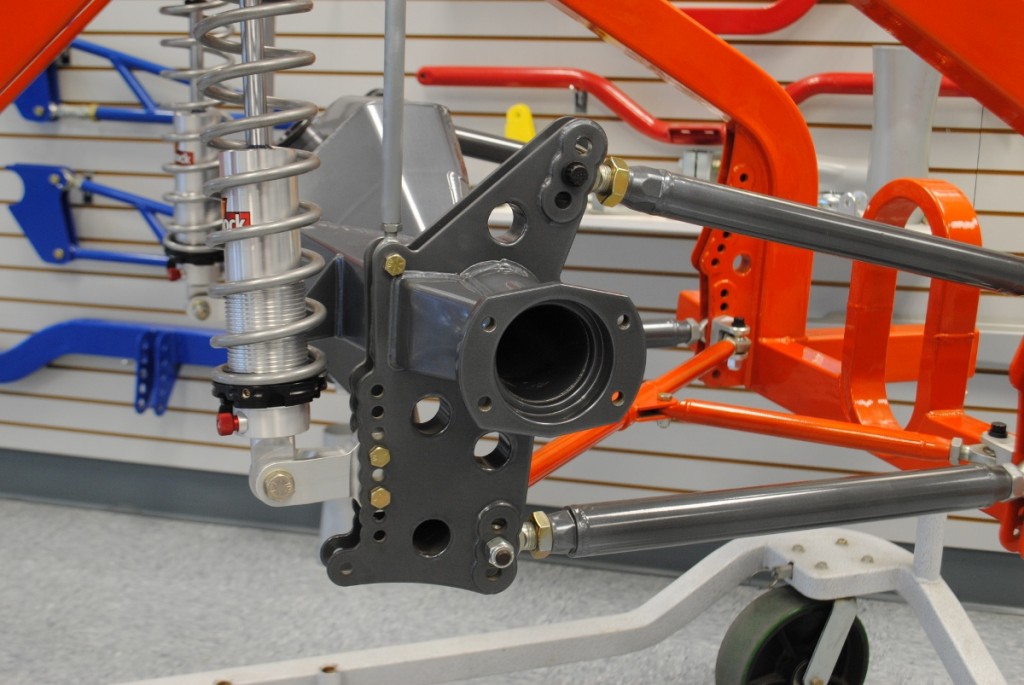
Check out the adjustable mounts for the upper and lower (4-link) arms. The 4130, 1.25-inch OD link tubes feature weld-in adapters and hex adjusters. Link tubes are also available in larger 1.375- and 1.625-inch diameters for high(er)-horsepower applications.
The strength of the rear clip allowed the Chassiswork’s boys to get serious with the rest of the components, starting with the rear end. Naturally the Eliminator II rear clip was designed to accept the equally strong FAB9 rear-end housing and Eliminator II 4-link suspension. Available in lengths ranging from 22 to 62.25 inches, the mild steel (or 4130), FAB9 housings also feature precision welding, a housing fill cap, and magnetic drain plug. As the name implies, the FAB9 housing was designed to accept 9-inch third members and components, as well as the Eliminator II 4-link suspension mounts and components. The 4-link system includes adjustable link mounts, double-sheer, lower shock mounts and even provisions for a tubular anti-roll bar.
The design allowed fine tuning of the ride height (in 5/8-inch increments) through multiple positions of the billet aluminum, lower shock mounts. The beefy 4130 link tubes measure 1.25 inches in diameter and include weld-in adapters and hex adjusters. Of course, the system includes the necessary map of all intersect points and tuning instructions.
Finishing touches on this Eliminator II rear clip and suspension include an X-style track locator, (bolt-on) upper sway bar mounts, and an oval driveshaft safety loop. In short, the Eliminator II offered everything you need to ensure all that high-performance action resulted in nothing but traction.
Source: Chris Alston’s Chassisworks, cachassisworks.com.


